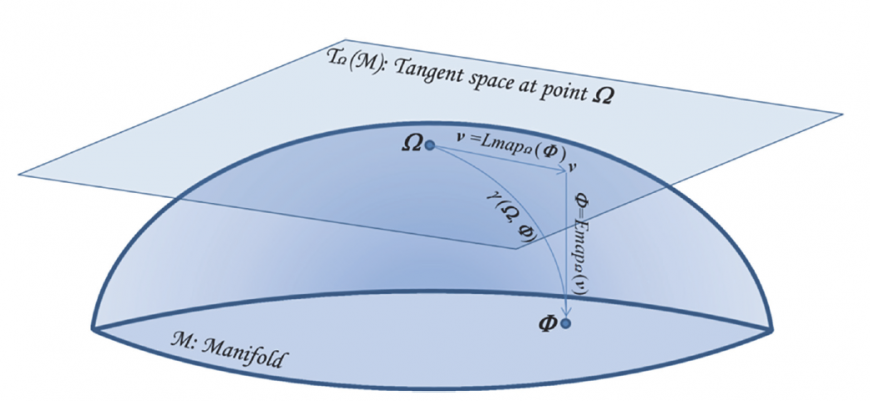Finding hidden variables in data can be challenging. Using Blind Source Separation allows to exact the independent sources in a unsupervised way. However, the methods require usually strong optimization constraints in order to avoid degenerate solutions and/or improve convergence. By using Riemannian Geometry framework, we propose to use the geometrical properties of the manifold that embeds the data to handle the constraints in a natural way.
This proposed framework was used to recover hidden sources with Approximate Joint Diagonalization with promising results.
We presented this work at EUSIPCO 2016 :
Approximate Joint Diagonalization within the Riemannian Geometry Framework
Florent Bouchard, Louis Korczowski, Jerôme Malick, Marco Congedo, 2016.
Abstract :
We consider the approximate joint diagonalization
problem (AJD) related to the well known blind source separation
(BSS) problem within the Riemannian geometry framework. We
define a new manifold named special polar manifold equivalent
to the set of full rank matrices with a unit determinant of
their Gram matrix. The Riemannian trust-region optimization
algorithm allows us to define a new method to solve the AJD
problem. This method is compared to previously published
NoJOB and UWEDGE algorithms by means of simulations and
shows comparable performances. This Riemannian optimization
approach thus shows promising results. Since it is also very
flexible, it can be easily extended to block AJD or joint BSS.
Link : go to Publication or go immediately to the HAL page (link)
